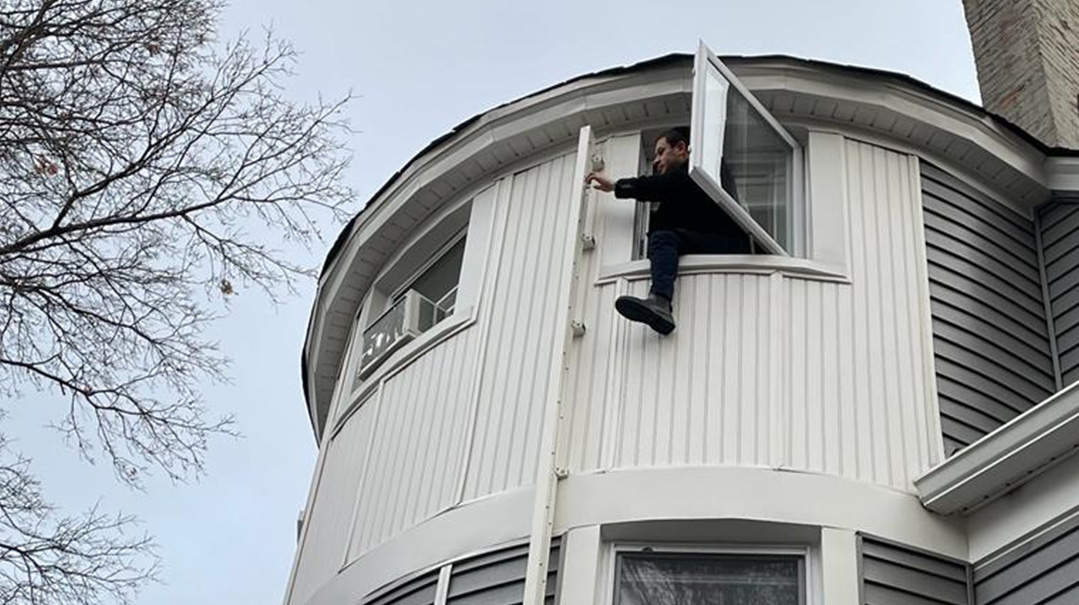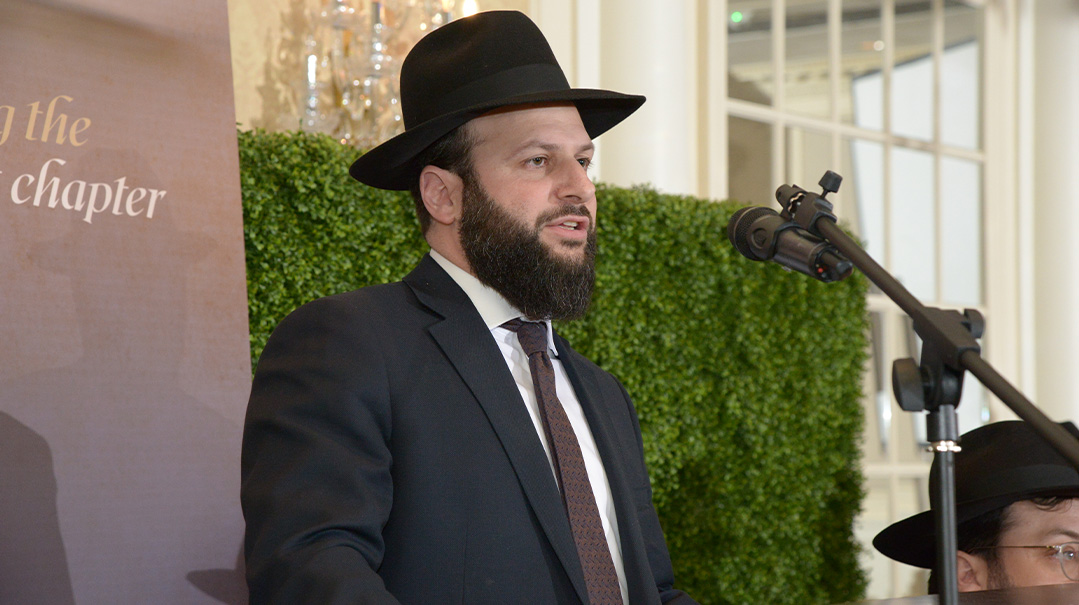10 Questions for Ben Z. Weingarten

Ben Z. Weingarten is the man behind the JCalendar, a computerized zemanim display board. He’s the founder of Bee Zee Systems Inc., a custom software developing company in New York, New York.
1.Who's your clientele?
Shuls, schools, yeshivos, seminaries, college campuses, Chabad houses, nursing homes, camps, community centers, and more — basically, anywhere and everywhere communication boards are utilized. By now, it’s so standard, almost every blueprint for a new shul has a designated spot for their JCalendar, either in the sanctuary, in the lobby, or outdoors. You can find them worldwide — all over America, Europe, and Israel, from the Kosel in Yerushalayim to the tziyun of Rabi Shimon bar Yochai in Meron, from Sydney, Australia, to Hong Kong, China. Just as they say, “Wherever there’s Coca-Cola, there’s Chabad,” by now, it’s pretty much that wherever there’s Chabad, there’s JCalendar.
2. How did you get started?
Our company began by providing software solutions for organizations involved in direct mail and telemarketing. After several requests for a Jewish calendar application, we developed a calendar code for our desktop applications. We soon realized it held potential as a stand-alone solution for shuls, replacing traditional parshah, zemanim, and announcement boards, so we developed a programmable digital display system — the JCalendar.
3. What did it take to get it up and running?
We began by searching for adequate hardware. Back in the ’90s, it wasn’t an easy task — standard computers and screens were way too thick and bulky to hang on a wall. We partnered with two companies. One provided us with firmware — an e-prom chip placed on a small computer board built specifically to run the program — and the other company supplied us with custom LCD display panels. Assembling those various components gave birth to the very first JCalendar in the late ’90s.
4. What challenges did you face when launching?
A big challenge was covering all shittos and minhagim regarding holidays, zemanim, nusach, haftarah reading, limudim, and so on. An even bigger challenge was that the JCalendar had to gain tribe acceptance: Shuls on the left had to realize the benefits of a digital zemanim board, and shuls on the right had to embrace something they’d never seen before. One administrator of a Brooklyn shul who got the JCalendar as a donation ordered it removed. “Chadash is assur min haTorah,” he told me, paraphrasing the prohibition of a new wheat crop and insinuating that a new idea must be rejected. “We’ll accept it when XYZ shul in Boro Park has it,” he said. Needless to say, today they’ve all gotten on board, as we like to say.
5. Has the product evolved over time?
Yes, in every way. I won’t bore you with the technical details, but all that happened to technology in the past 20 years has happened to JCalendar as well — flat screens, wireless communication, mobile application, etc. We’ve evolved from an embedded one-directional monochrome message output system to a full-duplex, multimedia, wireless signage/communication system. (See, I bored you with the technical details…)
6. What did you learn about your clients along the way?
No two customers are alike, so a high level of customization is a must. We include a full selection of every shitah, minhag, language, pronunciation, and spelling preference. To illustrate the extent of the detail: Our system has a default of the most common English spellings for Hebrew terms like names of Yamim Tovim and parshiyos, but it also allows users to overwrite that information by spelling terms the way they like. We’ve actually seen at least nine spellings of the word Shabbos: Shabbos, Shabbat, Sabbath, Sabat, Shabis, Shabat, Shabbes, Shabos, and of course, Saturday. We programmed it so anytime the system generates a term like Shabbos Chanukah, Shabbos Chol Hamoed Succos, it spells it exactly the way the client prefers.
7. What’s your customer service like?
We’re always available to assist, but in reality, a big draw of JCalendar is that it’s easy to manage. Our customers expect to be able to implement it all on their own, to be able to change every aspect of how and where the information is displayed, all without our assistance. The user has full control over everything — content, layout, and design. Our customer service has actually changed dramatically over the years. For example, back in 2007, the new Daylight Savings Time rule went into effect — it was extended from the second Sunday in March to the first Sunday in November. We had to deal with the enormous task of physically replacing and shipping every single e-prom chip with an updated version reflecting the new DST rules. Today, customers get updates remotely and instantly on a regular basis.
8. Any near fiascoes?
I’ll never forget the call from the panicked gabbai of a big shul in Williamsburg on daled Iyar, complaining that the JCalendar is displaying “Yom Hazikaron.” Apparently, the Zionist JCalendar option was mistakenly set to ON, so it was scheduled to show Yom HaZikaron and Yom Haatzmaut. We guided him to set that option to OFF. He told us — with total horror in his voice — that there’s no chance the unit would have survived had it been left displaying “Yom Haatzmaut” on hei Iyar.
9. Who’s your most memorable client?
The gabbai of a Young Israel shul who actually became part of our company. He was constantly giving us feedback on a level that made it obvious he wasn’t your regular user. It piqued our interest, and we discovered he’s a former NASA engineer. He was deeply involved in operating the system in his shul, and he wanted to learn more about it. Eventually, he joined our technical team. I also often think about a client from Long Island who unfortunately lost his only son in a tragic car accident. He donated a JCalendar to every shul in his neighborhood, explaining that his son was always on time for davening, and he couldn’t think of a more appropriate way to contribute as an aliyah for his neshamah.
10. Any unusual or moving requests?
A shul in Williamsburg requested that their JCalendar be connected to the audio system in the mikveh to automatically announce, in Yiddish, of course, warnings for upcoming relevant halachic zemanim of tefillah — things like the end of zeman Krias Shema, zeman tefillah, candle lighting warnings, at X amount of minutes before Shabbos or Yom Tov so people immersing in the mikveh know to hurry to make it on time. Of course, that’s now an optional feature for all. The most moving was when a shul secretly requested a design where the most dominant information on the screen is the day of the week with the indication of “DAY” or “NIGHT” changing at the appropriate time of day. They wanted it as a tool to assist an aging dignitary suffering memory loss who was challenged with orientation. That request inspired us to develop a product for people with memory challenges.
(Originally featured in Mishpacha, Issue 742)
Oops! We could not locate your form.













